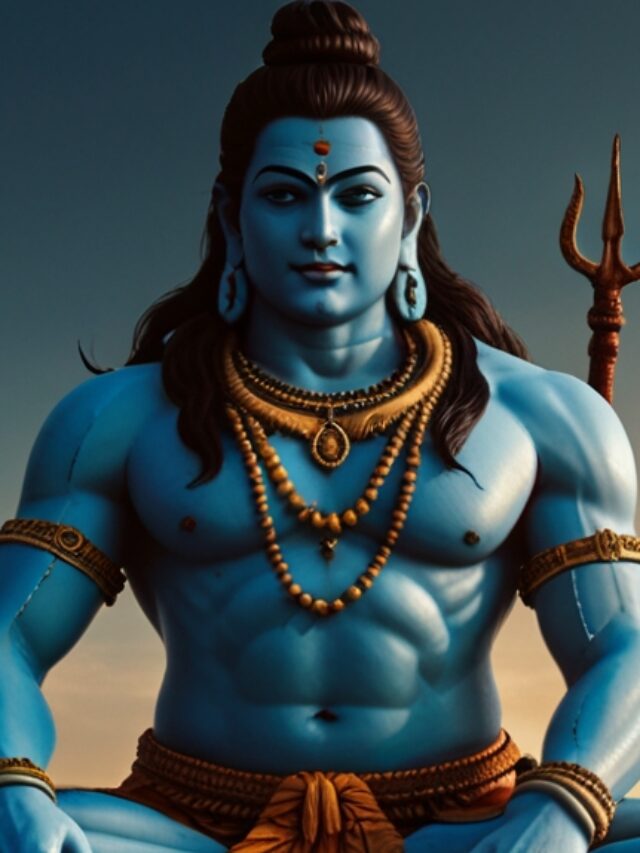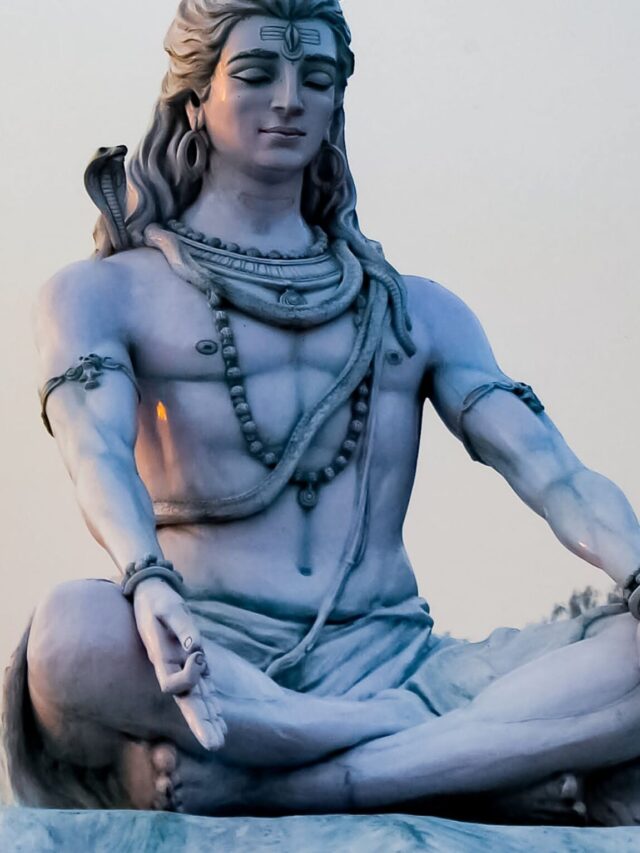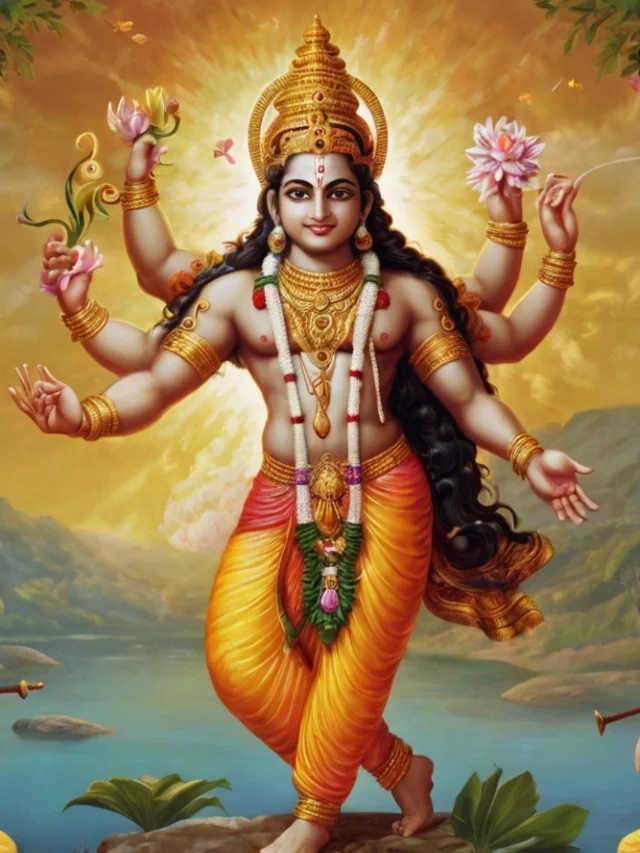Arjuna’s Retaliation and the Rise of Fierce Battles. Explore how Arjuna retaliates fiercely against Bhishma’s dominance, unleashing his full potential as a warrior. The battlefield intensifies with brutal clashes, strategic formations, and rising casualties, setting the stage for some of the most ferocious battles in the epic.
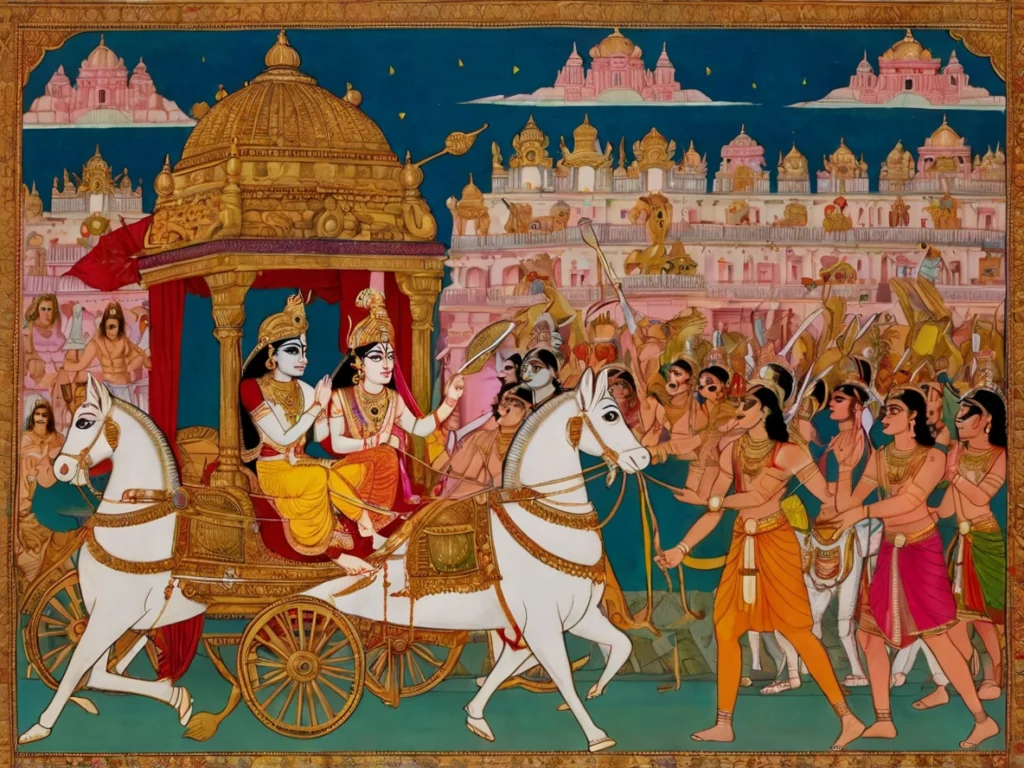
Day 3 of the Mahabharata War
Day 3 of the Mahabharata war, known as the Kurukshetra War, was marked by intense battles and strategic maneuvers from both sides—Kauravas and Pandavas. This day witnessed great valor, fierce duels, and heroic deeds on the battlefield, particularly highlighting the skill of Bhishma, the commander-in-chief of the Kaurava army.
Arjuna’s Retaliation and the Rise of Fierce Battles:
Bhishma’s Rampage: Bhishma, the grand patriarch of the Kuru dynasty and commander of the Kaurava forces, was at the forefront of the battle on this day. He wreaked havoc on the Pandava army with his unmatched archery skills. He was a key figure on the battlefield, and none could withstand his onslaught. His presence alone boosted the morale of the Kauravas and made him the focal point of the battle.
Pandava Strategy: The Pandavas, led by Yudhishthira, realized that Bhishma was causing severe damage to their forces. Their strategy for the day was to counter Bhishma’s strength and bring him under control. Arjuna, the greatest warrior on the Pandava side, was tasked with confronting Bhishma. Arjuna, despite his reluctance to fight his grandsire, knew that Bhishma had to be subdued.
Arjuna vs. Bhishma: On this day, Arjuna was engaged in a fierce duel with Bhishma. Arjuna’s charioteer, Krishna, constantly motivated him to fight with full strength, reminding him of his duty as a warrior (Kshatriya dharma). Despite Arjuna’s efforts, Bhishma’s experience and ferocity kept the Pandavas at bay for most of the day.
Duryodhana’s Frustration: Duryodhana, the eldest Kaurava, was growing increasingly frustrated with Bhishma’s inability to decisively defeat the Pandavas. He believed that Bhishma was holding back, out of affection for the Pandavas, especially Arjuna. Duryodhana questioned Bhishma’s loyalty, which led to some tension between the two.
Bheema’s Valor: On this day, Bheema displayed exceptional bravery. He fought several Kaurava brothers and decimated large sections of their army. Bheema’s strength and tenacity were on full display as he killed numerous Kaurava soldiers, keeping the Pandava spirits alive amidst the chaos.
Drona’s Leadership: Dronacharya, the royal teacher and general of the Kaurava forces, led many strategic attacks against the Pandavas. He was instrumental in causing significant casualties on their side. Drona’s tactical brilliance made it difficult for the Pandavas to gain an upper hand, even though they were putting up a strong resistance.
Sunset and End of Day 3: As the sun set, the battle came to a halt for the day, as per the rules of the war. The Pandavas and Kauravas both returned to their camps to rest and strategize for the next day. The battle had not reached a decisive point, but the Kauravas had an upper hand due to Bhishma’s prowess.
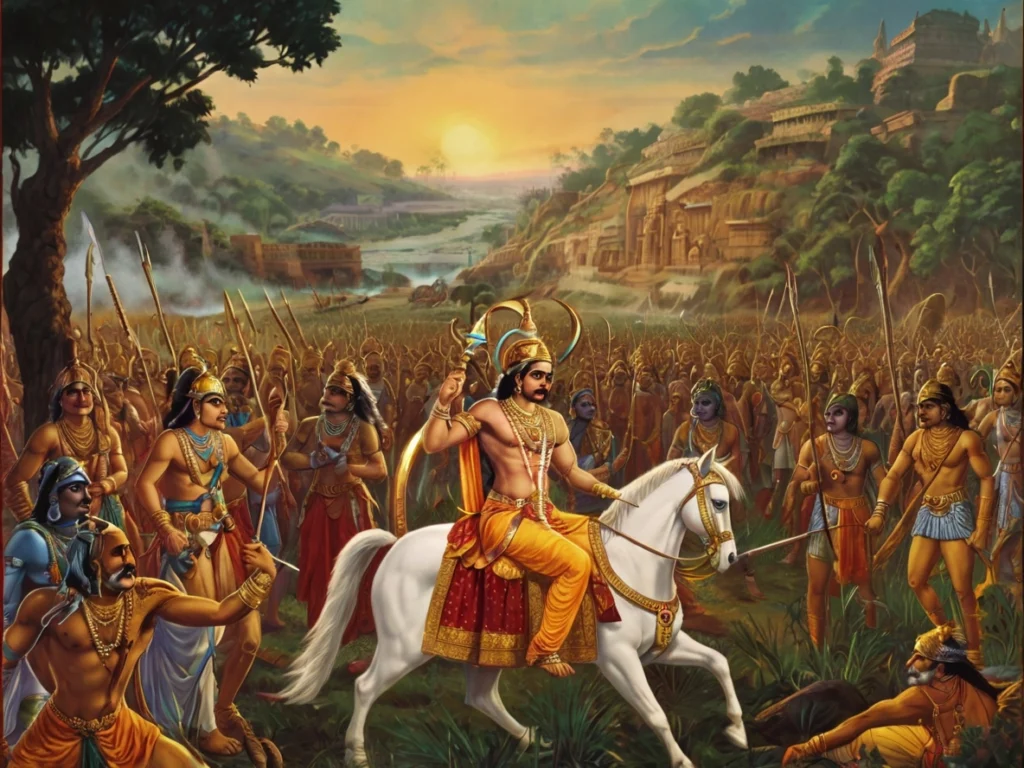
Day 4 of the Kurukshetra War
Day 4 of the Kurukshetra War continued with intense fighting between the Kauravas and Pandavas. Like the previous days, this day saw incredible displays of valor and combat skills, but neither side achieved a definitive victory. However, it was another day where Bhishma, the commander of the Kaurava army, proved to be nearly invincible, frustrating the Pandavas.
Bheema’s Wrath and the Mounting Casualties:
Pandava Strategy: On the morning of Day 4, the Pandavas realized they had to come up with new tactics to handle Bhishma’s onslaught. Yudhishthira conferred with his brothers and generals, urging them to focus more on weakening the Kaurava forces instead of solely focusing on Bhishma, who was difficult to defeat.
Bhishma’s Continued Rampage:
Once again, Bhishma led the Kaurava forces and was virtually unstoppable. He rode into battle like a storm, cutting through Pandava soldiers and wreaking havoc with his sharp arrows and incredible archery skills. His experience and knowledge of warfare made him a dominant figure, and the Pandava warriors found it hard to match his pace.Arjuna and Krishna’s Dilemma:
Arjuna, the greatest Pandava warrior, was the one designated to fight Bhishma. However, Arjuna remained hesitant because of his love and respect for Bhishma, who was his grandsire. Krishna, who was Arjuna’s charioteer, constantly urged him to fight without attachment and focus on his duty. But Arjuna struggled emotionally, and this reluctance gave Bhishma an edge on the battlefield.Duryodhana’s Discontent:
Duryodhana, the leader of the Kauravas, once again became frustrated with Bhishma. Duryodhana believed that Bhishma wasn’t fighting the Pandavas with full strength because of his affection for them. Duryodhana’s doubts grew as he saw how the Pandava forces, despite suffering heavy losses, still held their ground.Bheema’s Heroism:
Bheema, known for his incredible physical strength, was once again a crucial force for the Pandavas. On this day, he displayed great valor, defeating many Kaurava warriors in direct combat. Bheema also killed several Kaurava brothers, which fueled Duryodhana’s anger but boosted the morale of the Pandavas.Dronacharya’s Strategy:
Dronacharya, the master of warfare and the Kaurava’s strategist, led the Kaurava army with precision. His battle formations and tactics caused significant damage to the Pandava forces. Drona’s leadership added a new dimension to the Kaurava side, making it harder for the Pandavas to gain the upper hand.Satyaki’s Bravery:
Satyaki, a Yadava warrior and devoted follower of Krishna, played a significant role for the Pandavas. He fought heroically against the Kauravas, especially the powerful warriors like Kritavarma and Bhurishravas. Satyaki’s presence helped the Pandava army stay competitive despite Bhishma’s rampage.Clash of Drona and Drupada:
A notable duel on Day 4 occurred between Dronacharya and Drupada, the king of Panchala and father of Draupadi. Drupada had a long-standing enmity with Drona, and their duel was filled with personal animosity. However, Drupada was no match for Drona, who humiliated him once again in battle.Sunset and Conclusion of Day 4:
As the battle drew to a close at sunset, neither side had achieved a significant breakthrough. The Pandavas managed to hold their ground despite the overwhelming force of Bhishma and Drona, but they incurred heavy losses. Both armies retreated to their camps, exhausted but determined to continue the fight the next day.
Day 5 of the Kurukshetra War
Day 5 of the Kurukshetra War saw both the Pandavas and Kauravas intensifying their efforts, with the battlefield turning into an arena of fierce and relentless combat. Bhishma’s dominance persisted, but the Pandavas, especially Bheema and Arjuna, fought valiantly to counter his influence. The scale of destruction increased significantly as both sides began to suffer heavier losses.
Bheema’s Fury and the Duel with Bhishma:
Pandava Tactics:
By Day 5, the Pandavas were increasingly aware that they needed new strategies to handle Bhishma’s dominance. Yudhishthira, after consulting with Krishna and his brothers, devised plans to weaken the Kaurava army by targeting key warriors, while still trying to avoid a direct confrontation with Bhishma, who seemed nearly invincible.Bhishma’s Continued Onslaught:
Bhishma, once again leading the Kaurava forces, wreaked havoc on the battlefield. His mastery of archery and battle strategies caused significant casualties among the Pandavas. He led the Kaurava forces like a fierce storm, and the Pandavas struggled to withstand his attacks. Many of their warriors, despite their efforts, could not contain Bhishma’s fury.Duryodhana’s Growing Frustration:
Duryodhana continued to be dissatisfied with Bhishma’s approach, believing that Bhishma was deliberately holding back against the Pandavas, particularly Arjuna. Duryodhana’s frustration turned into resentment, and he pressured Bhishma to intensify his attacks, though Bhishma reassured him that he was giving his all for the Kaurava cause.Bheema’s Brutality:
Bheema was once again a key figure for the Pandavas on this day. His physical strength and battle prowess were unparalleled, and he made it his mission to break the morale of the Kauravas. Bheema sought out and killed many prominent Kaurava warriors, including several more of Duryodhana’s brothers. His rampage caused significant concern among the Kauravas, as Bheema was clearly a force to be reckoned with.Arjuna’s Reluctance and Krishna’s Urging:
Arjuna, while remaining a dominant warrior on the Pandava side, continued to struggle with his emotional conflict about fighting Bhishma. Krishna, Arjuna’s charioteer, repeatedly urged him to fight with determination and without attachment to the familial relationships that troubled him. Though Arjuna fought bravely, his hesitations in facing Bhishma allowed the Kauravas to maintain their momentum.Dronacharya’s Tactics:
Drona, the teacher of both the Pandavas and Kauravas, continued to play a pivotal role on the Kaurava side. His strategic thinking and control over his divisions ensured that the Kaurava army remained disciplined and organized. He used various battle formations, which made it difficult for the Pandavas to make significant breakthroughs.Satyaki’s Heroism:
Satyaki, the Yadava warrior fighting for the Pandavas, shone brightly on Day 5. His skill with the bow and his fearless attacks against powerful Kaurava warriors like Kritavarma and Shalya were critical in keeping the Pandava forces competitive. Satyaki’s efforts also helped protect key Pandava warriors from being overwhelmed.Abhimanyu’s Bravery:
Abhimanyu, Arjuna’s son, began to show his promise as a warrior on this day. Though young, Abhimanyu displayed remarkable courage and skill in battle, engaging some of the top Kaurava warriors in direct combat. His audacity and fighting spirit made him a standout among the Pandavas.Duel between Bheema and Duryodhana:
A key moment on Day 5 was the fierce duel between Bheema and Duryodhana. The two bitter rivals faced off directly, and the clash was intense. While Bheema had the upper hand in physical strength, Duryodhana fought with determination. The battle between them symbolized the deeper conflict between the two families. Although the duel ended without a clear winner, both warriors were severely wounded.Casualties Mount:
As the fighting intensified on both sides, the casualties began to mount. The Pandavas lost many key warriors, as did the Kauravas. The scale of death and destruction was unlike anything seen in the previous days of battle. The war was now taking a heavy toll on both armies.Sunset and the Day’s End:
As the sun set, the fighting came to an end for the day. Both sides retreated to their camps, exhausted and battered from the day’s relentless combat. The Pandavas had managed to hold their ground despite Bhishma’s overwhelming strength, but they had paid a heavy price in terms of casualties.

Day 6 of the Kurukshetra War
Day 6 of the Kurukshetra War was another fierce day of battle, as both the Pandavas and Kauravas intensified their efforts to gain control of the battlefield. The day saw the continuation of Bhishma’s dominance, but the Pandavas showed resilience, especially through the bravery of warriors like Bheema, Arjuna, and Abhimanyu. This day also marked the escalation of violence, with significant bloodshed and key confrontations.
Dronacharya’s Strategies and Ghatotkacha’s Entrance:
Bhishma’s Fierce Leadership:
Bhishma, the grand patriarch of the Kuru dynasty and commander of the Kaurava forces, continued to wreak havoc on the Pandava army. His leadership and mastery of battle formations made it extremely difficult for the Pandavas to make any progress. Bhishma was particularly focused on destroying large portions of the Pandava infantry and cavalry, causing severe losses on their side.Duryodhana’s Growing Confidence:
Duryodhana, buoyed by Bhishma’s dominance, began to feel more confident in the Kaurava forces’ ability to win the war. However, despite his growing confidence, he remained frustrated with Bhishma’s perceived leniency toward the Pandavas. Duryodhana wanted the war to end quickly and was impatient with Bhishma’s methods, believing that Bhishma was not giving his all due to his affection for the Pandavas.Arjuna’s Determination:
On Day 6, Arjuna became more determined to take on the Kaurava forces, particularly Bhishma. Encouraged by Krishna, Arjuna fought more aggressively, knowing that he had to overcome his emotional attachment to Bhishma if the Pandavas were to have any chance of winning. Arjuna used his archery skills to target key Kaurava warriors and their formations, trying to break through their defenses.Bheema’s Destruction:
Bheema once again stood out as a dominant force for the Pandavas. His strength and sheer brutality on the battlefield were unmatched. On this day, Bheema made it his mission to destroy as many Kaurava warriors as possible, including more of Duryodhana’s brothers. Bheema killed several prominent Kaurava warriors, causing panic and confusion in the Kaurava ranks. His unrelenting attacks significantly weakened the Kaurava forces.Abhimanyu’s Growing Role:
Abhimanyu, Arjuna’s young and fearless son, began to play a more critical role in the battle on Day 6. His courage and prowess with the bow made him a formidable presence on the battlefield. Abhimanyu took on several experienced Kaurava warriors and managed to hold his own against them, earning respect and admiration from both sides.Dronacharya’s Strategic Genius:
Dronacharya, the Kauravas’ chief strategist and former teacher of both the Pandavas and Kauravas, continued to display his brilliance in warfare. He organized the Kaurava forces into complex battle formations, making it difficult for the Pandavas to penetrate their defenses. Dronacharya’s use of these formations, including the Chakravyuha, tested the skills and courage of the Pandava warriors.Ghatotkacha Enters the Battle:
On this day, Ghatotkacha, the son of Bheema and the Rakshasi Hidimba, made a significant appearance on the battlefield. Ghatotkacha, who possessed immense strength and magical abilities due to his Rakshasa heritage, caused havoc among the Kaurava ranks. His unpredictable and terrifying attacks put the Kauravas on the defensive, and his presence added a new dimension to the Pandava army’s fighting capability.Satyaki’s Heroics:
Satyaki, one of Krishna’s greatest disciples and a key warrior for the Pandavas, continued to display his courage and skill. On Day 6, Satyaki was involved in several fierce duels with prominent Kaurava warriors, including Kritavarma and Shalya. His presence on the battlefield was crucial in holding off some of the Kauravas’ most dangerous attacks.Duel Between Bheema and Bhishma:
One of the most intense moments of Day 6 was a direct confrontation between Bheema and Bhishma. While Bhishma was the elder statesman of the Kuru dynasty and a revered figure, Bheema showed no hesitation in attacking him. Their duel was fierce and showcased the contrasting styles of the two warriors—Bhishma’s mastery of traditional warfare against Bheema’s raw power. Despite his ferocity, Bheema could not overpower Bhishma, who fought with great restraint, as he still harbored affection for the Pandavas.Heavy Casualties:
Day 6 saw a significant rise in casualties on both sides. The scale of death and destruction was growing with each passing day. Both the Pandava and Kaurava armies suffered substantial losses as the war intensified. The battlefield was littered with the bodies of fallen soldiers, horses, and elephants, a grim reminder of the devastating cost of the war.Sunset and the Day’s End:
As the sun set, the fighting came to an end for the day. Both sides retreated to their camps to rest and regroup for the next day of battle. The exhaustion and emotional toll were beginning to weigh heavily on both the Pandavas and the Kauravas. Despite Bhishma’s continued dominance, the Pandavas remained determined to fight on.
Day 7 of the Kurukshetra War
Day 7 of the Kurukshetra War was another day of fierce and brutal combat, with both the Pandavas and Kauravas determined to break the stalemate that had persisted over the first six days of the war. Key warriors from both sides engaged in intense duels, and several battle formations were used to gain an advantage. Bhishma’s dominance continued, but the Pandavas began to use more aggressive strategies in response to their losses.
Satyaki’s Valor and Karna’s Growing Presence:
Bhishma’s Continued Leadership:
Bhishma, the commander-in-chief of the Kaurava army, remained an unstoppable force on the battlefield. His mastery of weapons and warfare kept the Pandava forces on the defensive. Bhishma’s presence made it difficult for the Pandavas to break through the Kaurava lines. Despite his advanced age, Bhishma showed no signs of fatigue, leading Duryodhana’s forces with ruthless efficiency.Duryodhana’s Optimism:
Duryodhana, emboldened by Bhishma’s continued dominance, was confident of victory. He constantly pushed Bhishma and the other generals, urging them to defeat the Pandavas decisively. Duryodhana, however, still harbored doubts about Bhishma’s full commitment to the Kaurava cause, believing that Bhishma’s affection for the Pandavas, especially Arjuna, was affecting his performance.Arjuna’s Aggressive Push:
Arjuna, on the advice of Krishna, became more aggressive in his approach on Day 7. Realizing that Bhishma was decimating the Pandava army, Arjuna began targeting key Kaurava warriors with precision. His skill with the bow and arrow was unmatched, and he managed to cause significant damage to the Kaurava ranks. Krishna constantly reminded Arjuna of his Kshatriya duty, pushing him to overcome his emotional reluctance to fight his elders and family.Bheema’s Rampage:
Bheema continued his relentless assault on the Kaurava army. On this day, he was particularly focused on killing Duryodhana’s brothers. Bheema swore to eliminate all 100 of them, and by Day 7, he had already killed several. His immense strength and fearlessness made him a terrifying presence on the battlefield. Bheema’s actions not only demoralized Duryodhana but also caused significant casualties among the Kaurava forces.Dronacharya’s Tactical Expertise:
Dronacharya, the royal teacher and one of the greatest warriors on the Kaurava side, continued to be a key figure in the battle. His strategies and formations caused severe problems for the Pandavas. Dronacharya used his knowledge of the Pandavas’ strengths and weaknesses to create formations that were difficult to penetrate. On Day 7, Drona’s tactics led to the death of several important Pandava warriors, further weakening their side.Abhimanyu’s Bravery:
Abhimanyu, the young son of Arjuna, once again showed his potential as a warrior. Though inexperienced compared to many of the seasoned veterans on the battlefield, Abhimanyu’s courage and skill made him a standout. On Day 7, he faced several prominent Kaurava warriors, including Karna and Shalya, and fought with remarkable bravery. His youthful energy and fearlessness gave the Pandavas a much-needed boost.Satyaki’s Heroism:
Satyaki, one of the Pandava generals and a disciple of Arjuna, played a significant role on this day. He was involved in fierce duels with Kaurava warriors, including Kritavarma and Bhurishravas. Satyaki’s valor and skill in archery helped hold the Pandava line and counter the aggressive attacks from the Kaurava forces.Ghatotkacha’s Impact:
Ghatotkacha, the son of Bheema and the Rakshasi Hidimba, once again proved to be a vital asset for the Pandavas. Using his Rakshasa powers, Ghatotkacha caused confusion and fear among the Kaurava ranks. His supernatural abilities and unpredictability gave the Pandavas an advantage, as many of the Kaurava warriors were unfamiliar with how to counter his magical attacks. Ghatotkacha’s presence forced Duryodhana and his generals to shift their focus, momentarily disrupting the Kaurava strategy.Yudhishthira’s Leadership:
Yudhishthira, the eldest of the Pandavas and their moral and strategic leader, played a more active role on this day. Though not as skilled in combat as Arjuna or Bheema, Yudhishthira’s calm leadership and wisdom were crucial in keeping the Pandava forces organized. He ensured that the morale of his troops remained high despite the heavy losses they had suffered. Yudhishthira also began to rethink strategies, knowing that they would need to find a way to neutralize Bhishma if they were to survive the war.Karna’s Presence:
Though Karna had not yet taken full command of the Kaurava forces due to Bhishma’s leadership, he made his presence felt on Day 7. Karna’s prowess with the bow and his deep-seated enmity toward the Pandavas, especially Arjuna, made him a fearsome opponent. On this day, Karna clashed with several key Pandava warriors and inflicted significant damage, though he still awaited the day he could fully engage Arjuna in battle.Casualties and Bloodshed:
The fighting on Day 7 was brutal and unforgiving, with heavy casualties on both sides. The battlefield was soaked with blood as soldiers, elephants, and horses fell in large numbers. The scale of the destruction was immense, and both the Pandava and Kaurava armies suffered significant losses. The sheer intensity of the war was beginning to take its toll on both sides.End of Day 7:
As sunset approached, the fighting came to an end, as per the rules of the war. Both armies retreated to their camps, exhausted but determined to continue the battle the next day. The Pandavas were increasingly feeling the pressure of Bhishma’s dominance, but they remained resolute in their fight. The Kauravas, on the other hand, were confident that their superior numbers and Bhishma’s leadership would eventually lead them to victory.
Day 8 of the Kurukshetra War
Day 8 of the Kurukshetra War saw a notable shift in the intensity of the battle. Both sides were fully committed to total warfare, and the level of violence and destruction increased dramatically. While Bhishma continued to lead the Kaurava forces with relentless vigor, the Pandavas, driven by desperation, began to fight with newfound ferocity. The day was marked by significant duels, strategic maneuvers, and a heavy loss of life.
Bhishma’s Unstoppable Force and Bheema’s Rampage:
Bhishma’s Unstoppable Force:
Bhishma, still the commander-in-chief of the Kaurava army, was the dominant figure on the battlefield. His immense experience and knowledge of warfare kept the Kaurava forces organized and effective. Bhishma led several successful charges against the Pandava army, killing countless soldiers. Despite his age, Bhishma’s strength and stamina seemed unending, and his formidable presence was deeply unsettling for the Pandavas.Pandavas’ Aggressive Strategy:
On Day 8, the Pandavas, aware of their growing losses, shifted to a more aggressive strategy. Yudhishthira, recognizing that they could not afford to keep fighting defensively, urged his brothers and generals to attack the Kaurava army with greater intensity. The Pandavas knew that they had to focus on Bhishma, even though he was seemingly invincible.Bheema’s Fury:
Bheema continued to be the most aggressive Pandava on the battlefield. On this day, he killed more of Duryodhana’s brothers, adding to his tally of slain Kauravas. Bheema’s raw strength and unrelenting attacks made him a fearsome opponent for the Kaurava warriors. His personal vendetta against Duryodhana and his brothers pushed him to fight with even more fury. Bheema’s presence on the battlefield was devastating for the Kauravas, who struggled to contain his wrath.Duryodhana’s Resilience:
Duryodhana, despite the loss of several of his brothers, fought bravely alongside his forces. He was deeply affected by the deaths of his siblings but used his grief to fuel his determination to defeat the Pandavas. Duryodhana took part in several key duels and encouraged his warriors to press harder against the Pandavas. He remained confident that under Bhishma’s leadership, the Kauravas would eventually prevail.Abhimanyu’s Brilliance:
Abhimanyu, the young and fearless son of Arjuna, continued to distinguish himself on the battlefield. His skill in archery and his fearlessness allowed him to take on some of the most powerful Kaurava warriors, including Karna and Dushasana. Abhimanyu’s courage and youthful energy boosted the morale of the Pandava army, and his contributions on this day were crucial in holding back the Kauravas’ advance.Satyaki’s Valor:
Satyaki, a key general for the Pandavas and a disciple of Arjuna, once again played a pivotal role in the battle. He fought fiercely against Bhurishravas, one of the key Kaurava warriors. Their duel was intense and showcased Satyaki’s skill as a warrior. Satyaki’s ability to hold off some of the Kaurava army’s best fighters helped prevent the Pandava lines from crumbling under Bhishma’s onslaught.Dronacharya’s Ruthless Strategies:
Dronacharya, the Kauravas’ chief strategist, continued to deploy effective battle formations that challenged the Pandava army. His knowledge of his former students’ fighting styles allowed him to exploit weaknesses in the Pandava army. On Day 8, Dronacharya organized several successful attacks on the Pandava forces, killing many soldiers and key commanders. His tactical brilliance was a key factor in the Kauravas’ ability to maintain their momentum.Karna’s Growing Role:
Though Karna was still not officially leading the Kaurava army due to Bhishma’s command, he continued to make his presence felt. Karna’s skill with the bow was unmatched, and his duels with Pandava warriors, particularly Abhimanyu and Satyaki, were fierce. Karna’s hatred for Arjuna and his desire for vengeance drove him to fight with relentless fury. He inflicted significant damage on the Pandava army, though he still longed for a direct confrontation with Arjuna.Ghatotkacha’s Impact:
Ghatotkacha, the son of Bheema and the Rakshasi Hidimba, once again caused chaos among the Kaurava ranks. Using his Rakshasa powers, Ghatotkacha unleashed terrifying magical attacks on the Kaurava soldiers, who were largely unprepared to deal with his supernatural abilities. Ghatotkacha’s unpredictability and strength gave the Pandavas a much-needed advantage, though the Kauravas quickly tried to regroup and counter his attacks.Key Duels and Confrontations:
The battlefield on Day 8 was filled with important duels between key warriors from both sides. Bheema fought against Karna and Dushasana, while Arjuna faced off against Drona and other powerful Kaurava commanders. These clashes were fierce and brutal, with neither side willing to give an inch. The duels were not just physical confrontations but also symbolic battles of honor, revenge, and righteousness.Casualties and Destruction:
Day 8 saw an even higher level of casualties than the previous days. The war was becoming bloodier, and the battlefield was littered with the bodies of fallen soldiers, horses, and elephants. The loss of life was staggering, and both the Pandava and Kaurava armies were suffering heavy losses. The sheer scale of destruction was becoming overwhelming, and the emotional toll on the surviving warriors was immense.Sunset and Day’s End:
As the sun set on Day 8, the fighting came to a halt, as was customary during the war. Both sides retreated to their camps, exhausted and battered from the day’s combat. The Pandavas, despite their losses, were determined to continue the fight, while the Kauravas, led by Duryodhana, were confident that their superior numbers and Bhishma’s leadership would eventually secure them victory.

